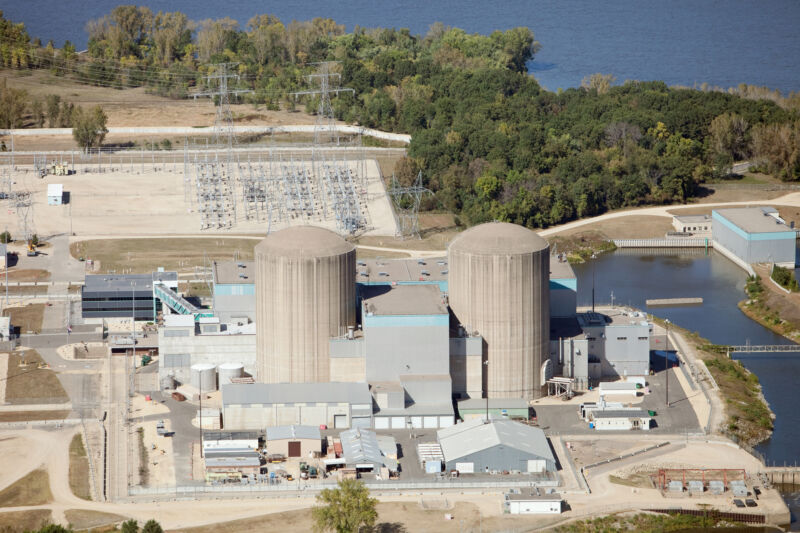

Nuclear plants occupy an odd position in the US’s energy landscape. They’re currently the most expensive form of generation out there, and many of the plants are a decade or more past their planned life span. At the same time, nuclear power is the US’s largest single source of low-carbon electricity generation, accounting for almost as much as the wind, solar, and hydro combined.
So the vast expansion of cheaper wind, solar, and natural gas has been driving nuclear plant closures—a dozen over the past decade. But those closures are making it harder for the US to limit its carbon emissions. Now, the federal government has decided it has to step in with money to keep those plants open.
On Tuesday, the US Department of Energy announced it was releasing guidance that would help nuclear plant operators apply for a slice of $6 billion available under its new Civil Nuclear Credit Program. The money will be coming out of the funds allocated through the infrastructure law that was the centerpiece of President Joe Biden’s legislative accomplishments.
The money intends to keep plants operational that would otherwise close due to economic issues. Priority in the first round of funding will go to plants where their operators have already announced closure plans. Next year, the remaining funds will be available to any plant operator, regardless of plans to close it.
The US government intervenes in the energy markets in many ways, but it’s rare to see a subsidy take the form of a direct payment to a plant operator. In this case, however, there’s an overlap between those who have ideological issues with government interventions in the market and people who support nuclear power. As a result, opposition to this move from the right is likely to be muted.
The Associated Press coverage of the announcement, however, mentions some opponents on the left who feel that the $6 billion could be better spent accelerating the installation of solar and wind power facilities.
(In a further indication of the complicated politics here, the Department of Energy features a supportive quote from Sen. Joe Manchin (D-WV), whose support for the bill required extensive negotiation and a reduction in emphasis on efforts to limit climate change.)
The money will undoubtedly provide a temporary reprieve for some existing nuclear plants, helping keep the US’s emissions lower while more renewable-generating capacity is installed. It won’t, however, save all of them. New York’s Indian Point plant, for example, is being closed in part because a Fukushima-style accident at the site would send radioactive water directly down the Hudson to New York City. But for plants that have stronger community support, the funds could make a critical difference.
When the money runs out, however, the plants will be facing even stronger headwinds from wind and solar energy, which are likely to see their prices decline even further in the intervening years.